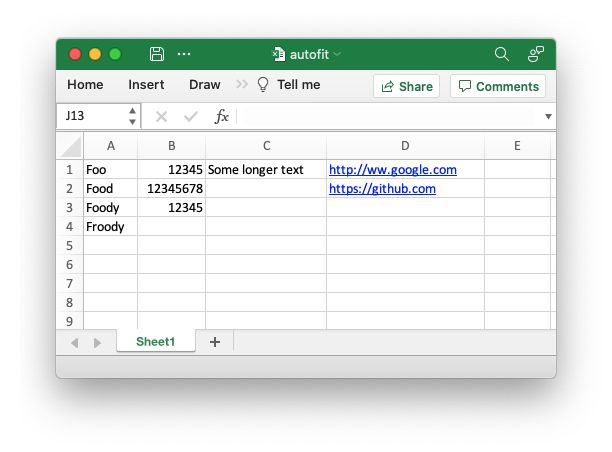Autofitting Columns: Example of autofitting column widths
This is an example of using the simulated autofit option to automatically set worksheet column widths based on the data in the column.
Image of the output file:

Code to generate the output file:
// SPDX-License-Identifier: MIT OR Apache-2.0
//
// Copyright 2022-2025, John McNamara, jmcnamara@cpan.org
//! An example of using simulated autofit to automatically adjust the width of
//! worksheet columns based on the data in the cells.
use rust_xlsxwriter::{Workbook, XlsxError};
fn main() -> Result<(), XlsxError> {
// Create a new Excel file object.
let mut workbook = Workbook::new();
// Add a worksheet to the workbook.
let worksheet = workbook.add_worksheet();
// Write some worksheet data to demonstrate autofitting.
worksheet.write_string(0, 0, "Foo")?;
worksheet.write_string(1, 0, "Food")?;
worksheet.write_string(2, 0, "Foody")?;
worksheet.write_string(3, 0, "Froody")?;
worksheet.write_number(0, 1, 12345)?;
worksheet.write_number(1, 1, 12345678)?;
worksheet.write_number(2, 1, 12345)?;
worksheet.write_string(0, 2, "Some longer text")?;
worksheet.write_url(0, 3, "http://ww.google.com")?;
worksheet.write_url(1, 3, "https://github.com")?;
// Autofit the worksheet.
worksheet.autofit();
// Save the file to disk.
workbook.save("autofit.xlsx")?;
Ok(())
}